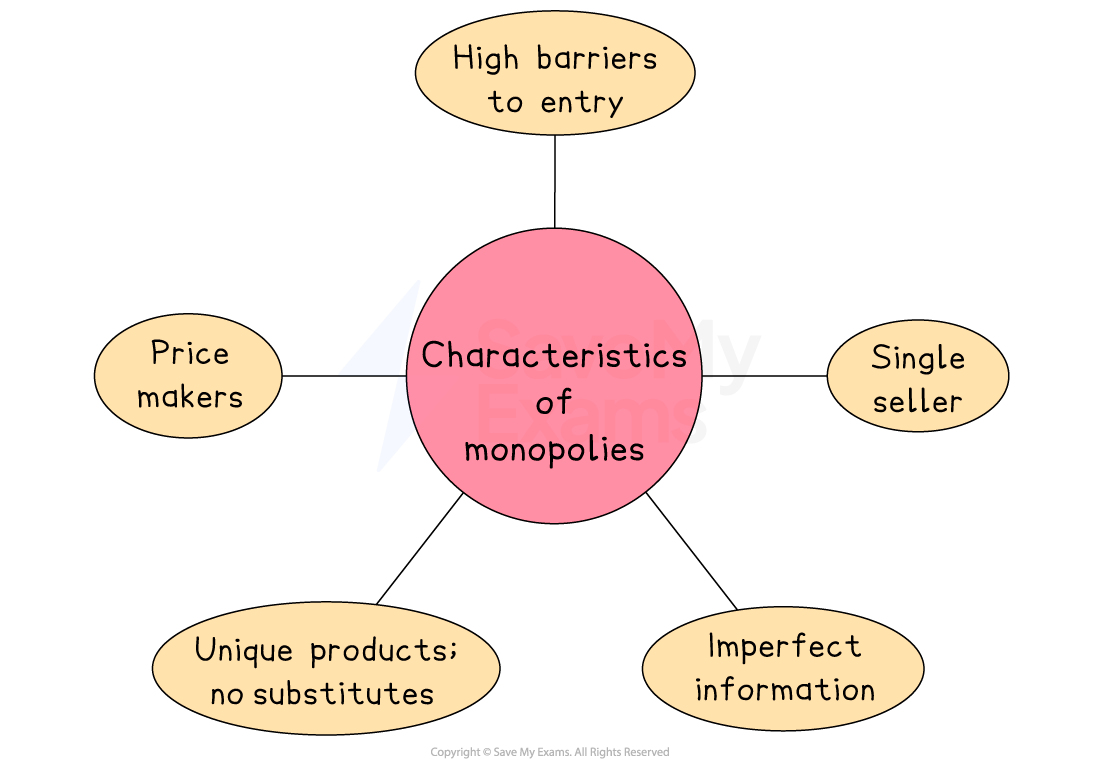Syllabus Edition
First teaching 2025
First exams 2027
Monopoly Markets (Cambridge (CIE) IGCSE Economics): Revision Note
Exam code: 0455 & 0987
Characteristics of monopoly markets
A monopoly is a market structure in which there is a single seller

There are no substitute products
The firms products are considered to be unique
The firm has complete market power
They are able to set prices and control output
This allows the firm to maximise profit
There is no long-run erosion of profit levels as competitors are unable to enter the industry
High barriers to entry exist
One of the main barriers is the ability of the monopoly to prevent any competition from entering the market
For example, by purchasing companies who are a potential threat
Many governments define a monopoly as any firm having more than 25% market share
Regulators act to prevent market share increasing beyond this level
It helps to maintain competition within the market
Advantages and disadvantages of monopoly power
When considering the pros and cons of monopoly power, it is useful to think about the pros and cons for different stakeholders
Evaluating monopoly power from the firm's point of view
Advantages | Disadvantages |
|---|---|
|
|
Evaluating monopoly power from the employee's point of view
Advantages | Disadvantages |
|---|---|
|
|
Evaluating monopoly power from the consumer's point of view
Advantages | Disadvantages |
|---|---|
|
|
Evaluating monopoly power from the supplier's point of view
Advantages | Disadvantages |
|---|---|
|
|
The effect of having only one firm
Price: The monopoly can set prices above competitive levels
Quality: Quality may fall if there is no competitive pressure, but it can also improve if profits fund innovation
Choice: Very limited — consumers may have only one supplier
Profit: Monopolies can earn abnormal (supernormal) profits in the long run due to lack of competition
Examiner Tips and Tricks
When evaluating monopolies, demonstrate critical thinking by acknowledging the positives as well as the negatives. For example, Amazon has partly become a monopoly by being very good at what they do and consumers benefit from lower prices and greater choice. However, this power means that they can also abuse the suppliers on their platform

Unlock more, it's free!
Did this page help you?